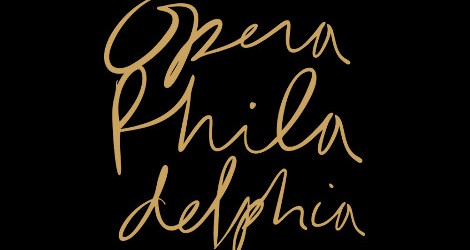Opera Philadelphia
- At October 18, 2013
- By Nic Muni
- In Opera Productions
 0
0
I was able to catch a performance of Opera Philadelphia’s production of Nabucco, conducted by Music Director Corrado Rovaris in a production designed and directed by Thaddeus Strassberger. It was the first time this opera had been presented by this company and was cause for celebration in this Verdi bi-centennial year.
This was a rich and interesting experience, an adventure well worth taking. I salute Opera Philadelphia and their co-producers (Washington National Opera and Minnesota Opera) for taking the risk involved and for successfully bringing it to fruition. The production approach involved framing the opera within a story about the premiere of the opera at La Scala in 1842, the idea being that Nabucco actually had a political impact by spurring Italians to revolt against the oppressive control of the Austro-Hungarian empire, which held Italy in its grip at that time. The famous chorus “Va, pensiero” became the unofficial national anthem and Verdi eventually became a kind of folk hero of the Risorgimento movement.
During the overture, there were supers dressed as Austrian soldiers who came down the aisles of the theater and opera patrons of the period who were ushered across the stage (?) and into one of the theater’s boxes from which they observed the opera itself and were sometimes lit and interacted with the event onstage. Because the performance took place at the Academy of Music, which itself was somewhat modeled on the design of La Scala, one had a solid sense of the period.
On the whole, I found that the framing device, while an interesting nod to the historical significance of the opera, was not developed fully enough to justify its inclusion. The set-up (Austrian soldiers in the theater, opera patrons in 1840’s clothing) was a gloss on the reality it was trying to portray–how could it have been otherwise? But more than that, there was no possibility to construct a satisfying drama within the framing device–again, how could that have been possible? So, by headlining the framing device but not being able to fulfill the expectations it spawned, the concept remained on the level of historical information–not uninteresting but also not inherently theatrical–leaving the opera itself in a sort of no-man’s land of existence. Was the opera proper a foil to the framing device? Or was it a theatrical reality in and of itself? Only at the very end, during the curtain calls, was a real connection made between the singers and the frame characters, when the prima donna enacted a kind of protest against the patrons in the opera box (who were presumably Austrian?) by throwing the bouquet of flowers she had been honored with back at the patrons. To have this one action be the culmination of the conceit struck me as a weak, and late, attempt to tie everything together–although it did motivate a reprise of the famous “Va pensiero” chorus quite nicely. What it also supplied was a surprise, which was terrific. Sadly, it upstaged the opera…
The other interesting thing was the effect the framing device had on the actual opera. It motivated a sort of historical re-production in terms of the scenery, which put on display a nearly lost art of two-dimensional scenery. The program notes even mentioned that the designs were painted by one of the artisans from La Scala itself–and this was a lovely notion. The scenery was colorful, featuring false perspective and other techniques of simulating reality in theatrical language. The clothing seemed to echo that stylistic approach to some degree.
The question that kept arising in my mind was whether the singers were instructed to employ the acting style of the period. And this was where the aesthetic confusion lay for me, because I saw no potent use of the “attitudes” that I associate with the acting style of that period. It struck me as a sort of slightly heightened naturalism. The problem with this approach (if it indeed was the directorial approach, I could not tell) is that it came across to me simply as poor, provincial level acting. And this was a real blow to believing in the opera itself.
I have directed Nabucco once (see photos of that production on this website) and fully appreciate how difficult it is to pull off successfully. The dramaturgy is riddled with contrivance, it is extremely difficult to cast–especially the roles of Abigaille and Zaccaria, and a great Nabucco is also not easy to find. To assemble singers capable of the vocal demands and who are good actors is a very tall order. Opera Philadelphia certainly found a capable group. Morris Robinson, as Zaccaria, displayed a truly distinctive sound with a timbre that seemed to match the grandeur of the role. Ismaele was unusually strong for this critical but underdeveloped role; Adam Diegel’s sound was clarion and heroic and he cut a great figure onstage. In a very real way, he showed the most distinction as a singing-actor. I wish I could be more positive about the rest of the cast. Perhaps it was the concept itself, in its conceit that this was the premiere performance at La Scala, that unwittingly raised vocal expectations beyond what could be realized by this wonderful company? The chorus should never go unmentioned in this opera and they were absolutely splendid, delivering power and beauty in equal measure, spurred on by the eloquent, crisp and rich conducting by Maestro Rovaris.
All in all, an interesting night at the opera house and kudos to all the artists involved. It made me more deeply consider the technique of supplying a framing device (an opera within an opera, a dream, etc.) and how such a device can really enhance the main story…or not. When a production stimulates this kind of response it is well worth the effort and I am thankful for having seen it.
